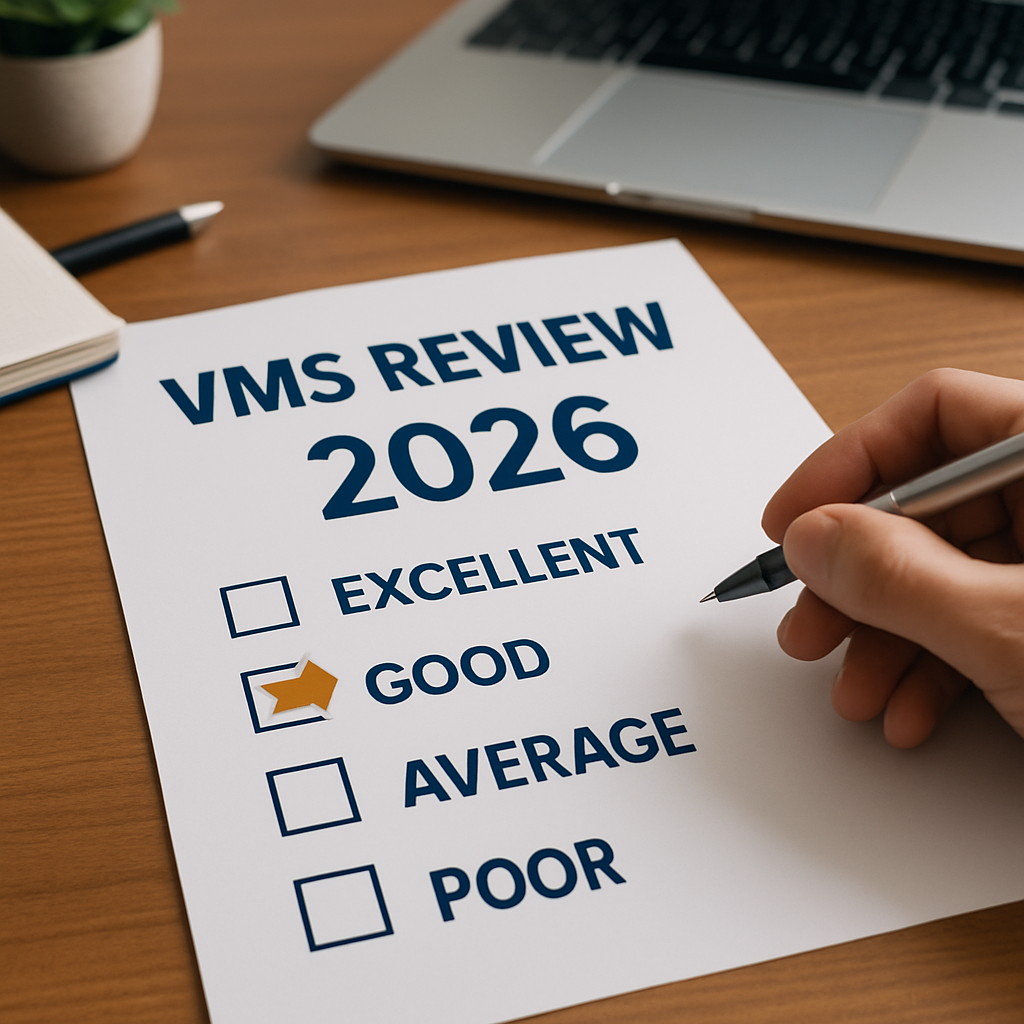Managing staffing agency vendors is key to improving service, controlling costs, reducing risks, ensuring compliance, and building strong relationships. These strategies enhance financial performance and ROI. This article outlines best practices for optimizing your vendor management processes to maximize your ROI.
What is Vendor Management
Vendor management is the process that businesses use to strategically manage their vendors. This includes every step in the vendor management lifecycle, from sourcing vendors, negotiating contracts, mitigating risk, analyzing vendor performance and offboarding. Learn more about Vendor Management here: What is Vendor Management
The Importance of Robust Vendor Management Protocols
Failing to implement robust vendor management protocols poses inherent risks to your company, including the potential for service level shortcomings, inadequate compliance measures, failure to meet regulatory requirements, unnecessary expenditures, and the development of suboptimal relationships with vendors.
Establishing a comprehensive vendor management framework is crucial to safeguarding your business against such pitfalls and promoting operational excellence.
Below are some best practices you should ensure are part of your vendor management processes:
#1 - Have a documented framework
Before embarking on the selection of staffing agencies or the implementation of systems, it is prudent to establish a comprehensive vendor management policy. This policy serves as a foundational document, ensuring clarity and understanding of vendor management practices across your entire team. It becomes a valuable resource for team members seeking guidance on pertinent matters.
Tailored to the unique needs of your company, your vendor management policy should encompass key elements, including:
-
Purpose: Clearly articulate the objectives and goals of the vendor management policy.
-
Applicability: Define the scope and identify the stakeholders to whom the policy applies.
-
Data and Information Security: Detail protocols for safeguarding data, specifying access privileges and restrictions.
-
Roles and Responsibilities: Clearly outline the roles and responsibilities of individuals involved in vendor management.
-
Staffing Agency Assessment and Selection: Establish criteria and processes for evaluating and selecting staffing agencies.
-
Contractual Documents: Specify the required contractual agreements and documentation for vendor engagements.
-
Compliance Standards: Outline the compliance standards that vendors must adhere to in their operations.
-
Oversight and Monitoring: Define mechanisms for ongoing oversight, including provisions for agency audits.
-
Incident Management: Establish procedures for handling and resolving incidents related to vendor activities.
-
Enforcement: Clearly communicate the consequences of non-compliance and the enforcement mechanisms in place.
#2 - Utilize robust and clear contracts
When handling your contingent workforce, contracts take center stage as a crucial element. These legally binding agreements should lay out all the responsibilities your vendor needs to take on, keeping things crystal clear.
When you're putting together these contracts, it's a good move to refer to your policy. Make sure you've got all the bases covered – from data management to incident response and enforcement. Don't forget to set up some ground rules for sharing information and data.
Beyond the basics, it should contain specifics about staffing agency expectations. We’re talking timing, quality standards, specific requirements or certifications, and the nitty-gritty details like payment terms and proof of insurance coverage.
#3 - Build strong relationships with your vendors
It's common to see a revolving door of staffing agencies, which hampers the ability to attract high quality and dedicated agencies. You should invest in building relationships, information sharing and engaging with vendors to set them up for success, which ultimately leads to your success.
To maximize this deep relationship, you should ensure you have strong vendor onboarding and provide agencies insight into your culture, ways of working and uniqueness. In addition to strong goals or metrics that define success companies should operate with openness and transparency. This will support the vendor in providing high quality resources, quickly.
Conducting regular reviews such a QBR’s (Quarterly Business Reviews) that showcase performance against the program metrics, benchmarking against their peers also allows consistent check-ins and the ability to provide feedback. You should also be open to reverse feedback on what you can do differently as a client to enable success.
#4 - Choose staffing agencies carefully
There are multiple components to selecting a staffing vendor. Spending time up front is an exceptional use of time.
- Good fit – Ensuring there is a good match between your company and the agency is a critical step. Are they the right size? (Maybe you need a large vendor with national coverage, or a medium sized vendor with some specialization or maybe they have niche expertise). Do they have the geographical presence? Do they have experience in your industry and within the job categories? Can they handle your volume? Are they a good match of your values? It’s important to note, you don’t want to have too many vendors with similar footprint and capability.
-
Value – Can the vendor add to the existing footprint that ultimately improves quality? Can they get up to speed and provide the right resources, quickly at the right price? Dollar value should be important, but it isn’t the only consideration.
-
Risk – Evaluate your minimum standards. Ensuring your supplier is financially stable, has physical presence in the jurisdiction, has proper documentation (corporation documents, insurance as examples) and is established is important. Conduct references before onboarding and consistently auditing of payment etc. is a hugely underutilized tool.
#5 - Implement technology to manage your vendors
Manual work effort for managing your contingent workforce vendors generally results in fragmented processes, lack of centralization and inconsistent business rules. This can affect the success of your hiring, limits visibility into spending and often lower quality workforce.
Utilizing a vendor management system (VMS), can quickly solve these problems. Centralization, consistent process and visibility saves you time and money as well as helps reduce risk, improve vendor performance and provides robust data to make informed business decisions. A VMS also help create more transparency for vendors and helps agencies compete on a level playing field.
Learn more about How to Choose the Right VMS
Learn more about the Benefits of a VMS and what to look for when choosing the best VMS for your organization. Download our Free VMS Buyer's Guide here:
Discover the Power of Conexis VMS
Conexis VMS is purpose-built for organizations seeking to manage their contingent labor spend effectively. Here’s why we're the right choice:
- Fast Deployment: Get up and running in weeks, not months
- Transparent Pricing: Flexible pricing with no hidden costs
- White-Label Ready: Customize the platform with your brand
- Real-Time Insights: Make faster decisions with built-in analytics
- Audit-Ready Compliance: Store contracts, worker data, and rates in one secure hub
About Conexis VMS
Conexis is an award-winning Vendor Management System built for organizations that want the power of enterprise software without the complexity or cost.
Leveraging the latest technology, Conexis delivers the expertise, reliability and security of enterprise systems, while offering the flexibility, user friendliness and tailored, personal service you require. Learn more about our Company and why organizations Choose Conexis VMS.
Looking to Switch Your VMS or Just Getting Started?
Whether you are looking to Switch your VMS, or just Getting Started, we are here to help. Contact Us for a Free No-Obligation Consultation, See how Easy Conexis is to use by taking a quick 2 minute Self-Guided Online Demo, or Book a Personal Demo Today!
Additional Articles on this Topic:







